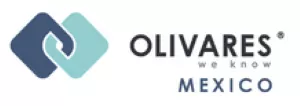1. Please briefly summarize your country's legislative framework for medicinal products (including biologicals), medical devices, food, and food supplements
The regulatory framework is set out in the following federal laws:
- The General Health Law1 ;
- The Regulation for Health Supplies2 ;
- The Regulation on the Health Control of Products and Services3 ;
- Mexican Official Standards (NOMs);4
- The Mexican Pharmacopoeia;5
- The COFEPRIS' Rules listing healthcare products that do not require a marketing authorization in view of their low risk to human health (COFEPRIS Rules);
- Amendments to the Equivalence Decree to import health supplies without marketing authorization.
- Regulatory Certainty Strategy for the Pharmaceutical Sector: Biosimilars
2. With regards to medicinal products and medical devices, how is the regulatory process structured in your jurisdiction from R&D through market approval until post-marketing vigilance, and what rules does it follow? Please briefly describe.
Regarding medicinal products and medical devices:
Medicinal products
Allopathic New molecules
Applicants for marketing authorisations must prove the safety and efficacy of their products through standard clinical trials according to the rules set out by the General Health Law, its regulations, and the NOMs of good manufacturing of medicines and active ingredients, as well as the approval of their products as new molecules from the COFEPRIS New Molecules Committee.
Generics
Applicants for marketing authorizations must prove that their products are bioequivalent to the innovator product. On May 3rd of 2021, the NOM setting the test to prove that a generic drug is interchangeable with a reference drug was updated (NOM-177-SSA1-2013).
There is a linkage system between COFEPRIS and the Mexican Institute of Industrial Property, which aims to prevent the granting of marketing authorizations in violation of patent rights.
Biologic New molecules
When it comes to legal and administrative information, the essential dossier submission requirements for innovative products manufactured in Mexico are preclinical and clinical trials, certificates of good manufacturing practices of the active pharmaceutical ingredient and the medicinal product, analytical methods, summaries, manufacturing licence, prescribing information, label, and a pharmacovigilance programme.
For innovative products manufactured abroad, additional requirements apply, particularly a certificate for export, a letter of representation with apostille and a legal representative with address in Mexico. In cases where the good manufacturing practices certificates are not issued by an agency recognised by COFEPRIS, such as the US Food and Drug Administration or the European Medicines Agency, an in-person inspection will be required.
Biocomparables (follow-ons)
The essential dossier submission requirements for biocomparables are almost the same as those for innovative biotech products, except for the requirements to prove safety, efficacy and quality.
For these purposes, biocomparable applicants must submit essentially:
- In vitro studies or comparative non-clinical studies.
- A report of a comparative test of pharmacokinetics if determined by the Ministry of Health to show pharmacokinetic comparability on key parameters between both the follow-on and the product of reference.
- Pharmacodynamics test reports.
- Comparative efficacy and safety clinical tests to show similarity between both the follow-on and the product of reference.
Once approved, close pharmacovigilance should be followed.
Recently, COFEPRIS published its Regulatory Certainty Strategy for the Pharmaceutical Sector: Biosimilars, the purpose of this strategy is to promote the development of biocomparable biotechnological medicines, establishing an institutional and regulatory framework, aligned with international standards, in order to promote the capacity of the industry in all phases of research and production of these products.
Orphan drugs
Orphan drugs were introduced to the General Health Law and the Mexican Pharmacopeia several years ago. In practice, they are approved by a particular procedure, following rules for new molecules when applicable and appropriate. Still, there are many ambiguities in the regulations.
Medical devices
Marketing authorization requirements for medical devices depends on the level of risk involved in their use, according to a threefold classification:
Class I encompasses products that are well known in medical practice, for which safety and efficacy have been proven, and are not usually introduced into a patient's body; Class II encompasses products that are well known in medical practice but may have material or strength modifications – if introduced, they remain in a patient's body for less than 30 days; and Class III encompasses products either recently accepted in medical practice or that remain in a patient's body for more than 30 days.
COFEPRIS analyses all medical devices and, if applicable, software that enables them to work. Mobile medical applications are a new area that COFEPRIS may address in the future with particular regulations, especially if they present health risks.
Also, there is a list of medical devices that are considered as low risk for the purpose of obtaining marketing authorization, and those products that due to their nature, characteristics and use are not considered as health inputs, and therefore do not require marketing authorization as well, this list is periodically updated.
3. What is the regulatory process for food supplements, from first notification to the competent authorities until post-marketing vigilance in your country, and what regulations are applicable here? Please briefly describe.
In terms of food supplements, the regulatory process is to notify COFEPRIS trough a "Notice operation" the commercialization of the product 30 days before starting operations.
Food supplements do not require marketing authorization and post-marketing vigilance. Instead of that, COFEPRIS advise to interested parties to perform a food supplements classifications consult in which the labeling and the quali-quantitative formula are reviewed before submitting the Notice operation. The regulations applicable here are:
- The General Health Law;
- The Regulation on the Health Control of Products and Services;
- The Regulation of the General Health Law on Advertising6 ;
- Mexican Official Standard (NOM), NOM-251- SSA1-2009, Hygienic practices for the processing of food, beverages or food supplements7 ;
- The Mexican Herbal Pharmacopoeia8 ;
- Agreement amending the one determining the additives and adjuvants in foods, beverages and food supplements, their use and sanitary provisions9 ;
- Agreement determining the plants prohibited or permitted for teas, herbal infusions and edible vegetable oils10 .
To view the full article click here
Footnotes
1. https://www.ordenjuridico.gob.mx/leyes.php#gsc.tab=0
2. Ídem
3. Ídem
4. https://dof.gob.mx/busqueda_detalle.php?textobusqued a=Norma+Ofici#gsc.tab=0
5. https://www.farmacopea.org.mx/
6. https://www.ordenjuridico.gob.mx/leyes.php#gsc.tab=0
7. https://www.dof.gob.mx/normasOficiales/3980/salud/sa lud.htm
8. https://www.farmacopea.org.mx/
9. https://dof.gob.mx/nota_detalle.php?codigo=5437267&fe cha=16/05/2016#gsc.tab=0
10. https://www.dof.gob.mx/nota_detalle.php?codigo=49580 62&fecha=15/12/1999#gsc.tab=0
The content of this article is intended to provide a general guide to the subject matter. Specialist advice should be sought about your specific circumstances.




